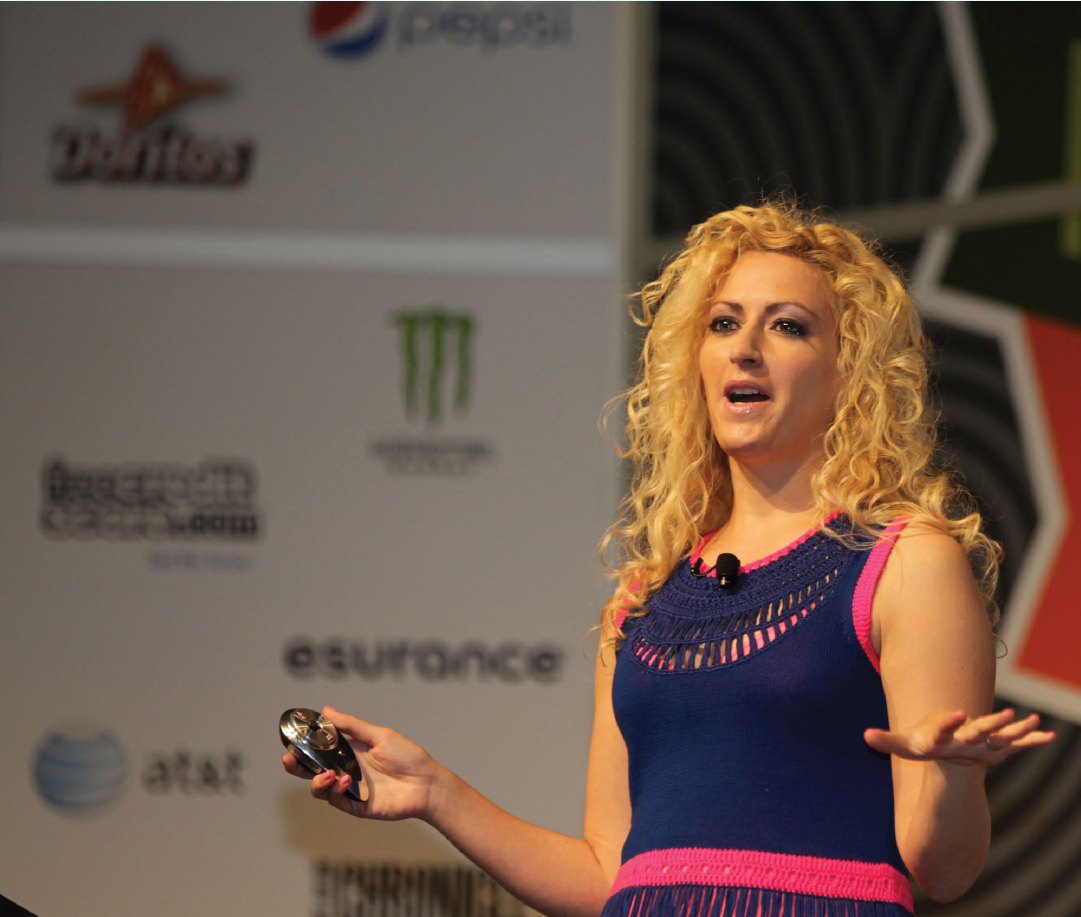Chapter 14
After hitting her head on a cabinet, Jane McGonigal suffered a debilitating concussion. She experienced long bouts of nausea, headaches, vertigo, and memory loss.1 Eventually, she began to feel depressed, and her thoughts turned to suicide. But rather than end her life, McGonigal did something quite different. She turned her recovery into a game. As she told an audience assembled at the Technology, Entertainment, Design (TED) Global Conference in Edinburgh, Scotland:
And these voices became so persistent and so persuasive that I started to legitimately fear for my life, which is the time that I said to myself after 34 days—and I will never for-get this moment—I said, I am either going to kill myself or I’m going to turn this into a game.
The game she created—Jane the Concussion Slayer—helped her recovery and saved her life. Wanting to help other people achieve similar results, McGonigal broadened the scope of her game to include a variety of health goals and turned it into a Web site and app entitled SuperBetter (www.superbetter.com).
McGonigal’s decision to turn her recovery into a game was a natural outgrowth of her professional work. With a PhD in performance studies from the University of California at Berkeley, she makes her living designing alternate reality–based games that have a positive impact on people by building their resilience, increasing their personal happiness, and helping them develop real-world problem-solving skills.
Addressing the TED audience, McGonigal made a clear point: playing games can extend your life by 10 years. She recounted how a game helped her recover from brain trauma and cited scientific research that shows the benefits of gaming:
Hundreds of millions of people use social games like FarmVille or Words With Friends to stay in daily contact with real-life friends and family. A recent study from [University of Michigan] showed that these games are incredibly powerful relationship-management tools. They help us stay connected with people in our social network that we would otherwise grow distant from, if we weren’t playing games together.
But she did more than quote scientific research to support her point. She also involved her audience in game-like activities. Asking her listeners to follow her directions, McGonigal had them snapping their fingers, using their smartphones to find images of baby animals on the Web, and shaking the hand of another audience member. Each activity was part of a quest game in which the audience earned points toward improving their well-being.
Within the span of a 19-minute speech, McGonigal shared her personal story, provided scientific research, and involved her audience in a game. When it was over, the audience understood not only that playing games can be beneficial to one’s physical and mental well-being but that a carefully composed speech can be an event to experience and remember.

Even when you know your specific purpose for a speech, determining exactly how to achieve it can be difficult. Jane McGonigal had an important message to share with her TED audience, but deciding how to present her message took work. This process of determining your speech thesis and main ideas and arranging them into a coherent and engaging presentation is the third step of the speech preparation process: composing. (See Table 14.1 for the Five Steps in Speech Preparation.) In this chapter, you’ll learn:
- How to develop your speech thesis
- Ways to identify and arrange your speech’s main points
- Ideas for keeping your audience engaged
- Strategies for introducing and concluding your speech
- How to write preparation and delivery outlines